THIS month I talk about how to target impoundment bass through the colder months and in the warm-up to summer.
In the past month we travelled to Lostock Dam, one of the more difficult dams to fish in our area compared to say Lake St Clair or Glenbawn Dam. We were originally invited to help out with a fundraiser to raise money for restocking the dam but we couldn’t go without fishing for some bass as well.
Most people are unaware that impoundment bass do not breed; instead they have to be constantly restocked. The government doesn’t cover the full cost of restocking and instead it falls on people and groups such as the Lostock Dam Caravan Park. So anything we can do to help is always much appreciated. If you would like to make a donation to help restock Lostock Dam, please contact Mark Hardy at the Lostock Dam Caravan Park on 02 4931 7118.
Winter can be a tricky time for locating impoundment bass but once you learn what to look for it becomes much easier. Usually when fishing for bass during the warmer months you cast to the banks, getting right under the structure, but winter is very different.
The biggest piece of the puzzle is learning to read your sounder properly. This can mean the difference between landing a 50cm bass or going home with a doughnut. During winter, bass leave the banks and congregate in deeper water, schooling up in massive numbers. In some cases we have found them schooling in 9-12m of water.
They are usually really fat at this time of year and can make for a lot of fun. When schooled in the deep it can also be easier to land your first big bass on lures.
To find the bass, I first watch the sounder, looking for deep drop-offs or submerged structure such as trees. The technique I use is called vertical or deep jigging. Even if you find a cluster of old trees in the water, get as close as you can and vertically jig the lure up the tree.
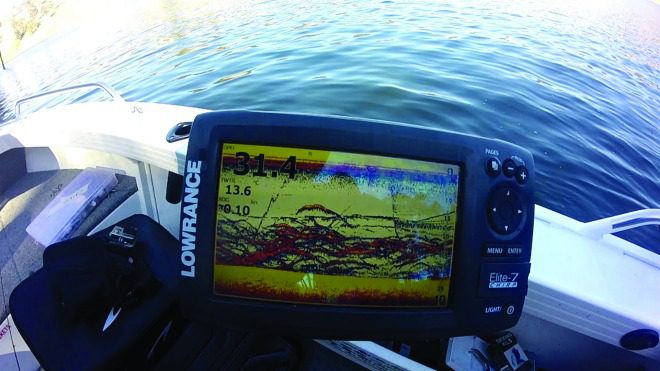
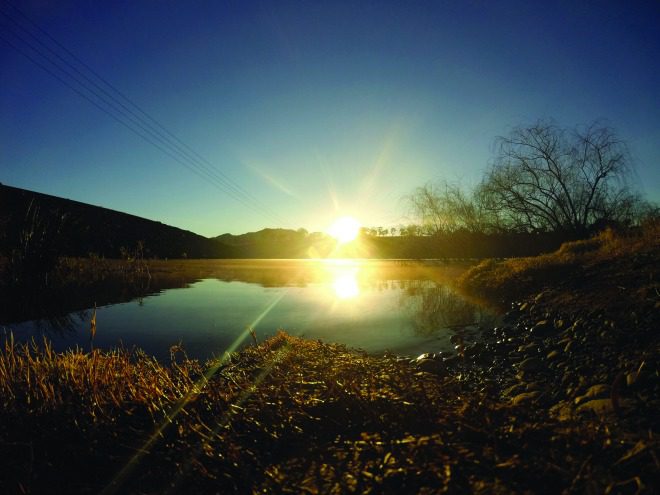
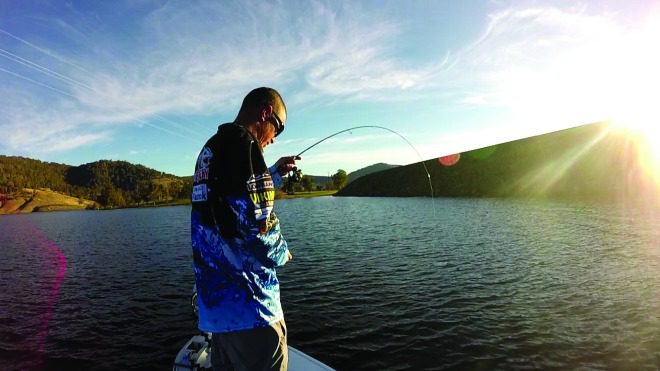
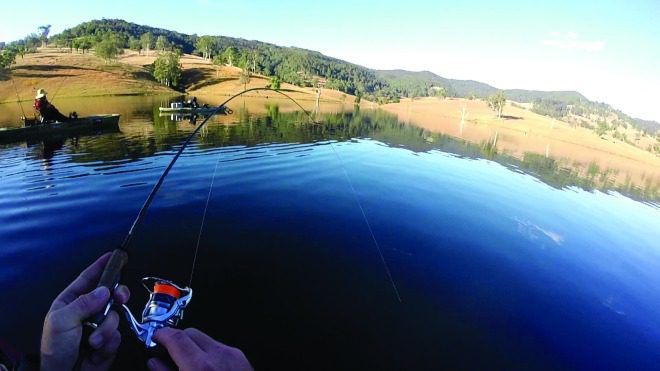
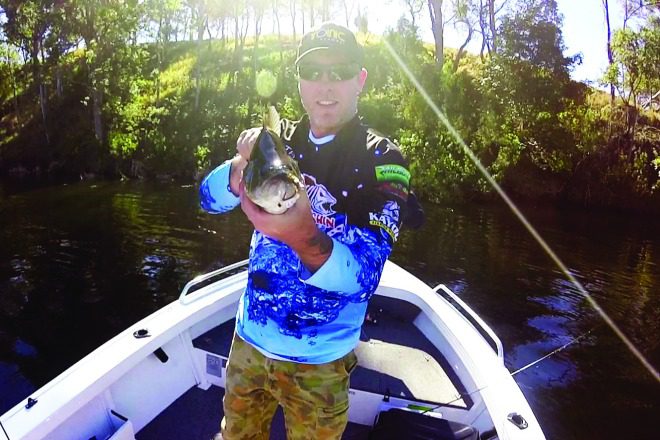
It’s a different style of fishing because you watch the sounder more than you cast. Once you have found the school, it’s a matter of selecting the right gear to tempt the bass into feeding. The impoundment bass can be a bit finicky in the cold, with softer strikes at your lure compared to the massive hits you get during warmer periods. More of a finesse rod is needed here because the bites are really soft and sluggish.
On this trip I went ultra-finesse by using 1-3kg Lox Ambassador rods with 4lb Timber Wolf braid and 4lb Toray fluorocarbon leader on a Shimano Stradic 1000. You can use any sort of lure but some work better than others. My usual go-to lures for this sort of technique are the Berkley Gulp Nemesis in 3”, 2.5” plastic grubs and flickbaits, metal blades in dark colours and small soft vibes in dark or completely black colours. I use dark colours mainly because in the deep water the fish will not be focusing so much on colour but instead movement, shadow and vibration.
Using soft plastics is an inexpensive option, so if you lose a lure you won’t be down $30-$50. With the plastics at Lostock, I used a 1/8oz jig head for a slow descent and to keep the lure in the fish’s face for longer.
Once on top of the school, drop your plastic or lure down, watching the sounder closely and following your line to make sure it gets to their water level, then give your rod a gentle slow lift, letting the lure do its job and its scent waft around. Pause for a couple of seconds after every lift and add light twitches.
You will have to be quick on your strikes because once you feel a gentle tap on your lure, 90 percent of the time the fish will have the lure in its mouth and if you’re not quick it will spit it out.
The other 10 percent of strikes are usually tail whacks given by the fish to say “get out of my area”. If this happens, it’s a matter of annoying the fish by presenting the lure over and over until it strikes properly. Adding a bit of scent such as Pro-Cure Nightcrawler or Squidgies S-Factor can help entice the bite as well.
The photo of the sounder shows the best school from our searching. We had the sounder set on high CHIRP with normal ping speed and noise reduction at medium. Learning how to use your sounder is a big part of fishing.
I hope this helps you the next time you’re chasing impoundment bass. If you have any questions or would like to watch our latest videos, you can find us on Facebook at 2 Mates Fishin.
Feel free to post or share your latest catches and chat to us about fishing. Until next time, have safe and happy fishing adventures.
 Bush ‘n Beach Fishing Magazine Location reports & tips for fishing, boating, camping, kayaking, 4WDing in Queensland and Northern NSW
Bush ‘n Beach Fishing Magazine Location reports & tips for fishing, boating, camping, kayaking, 4WDing in Queensland and Northern NSW









